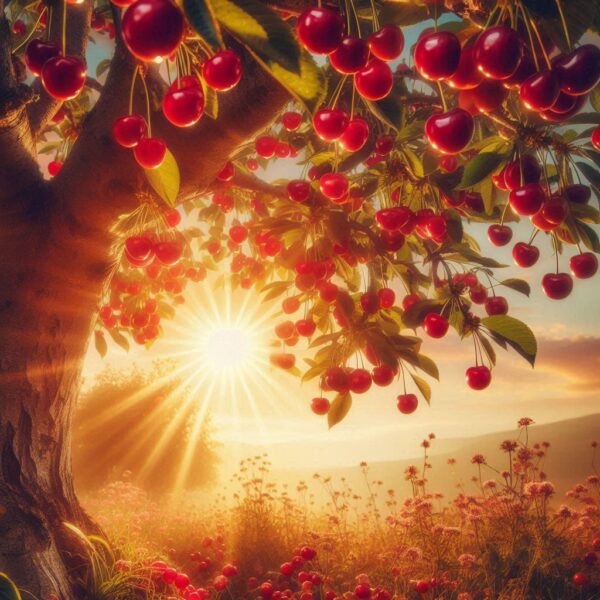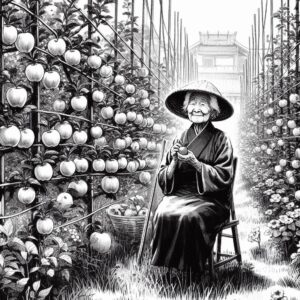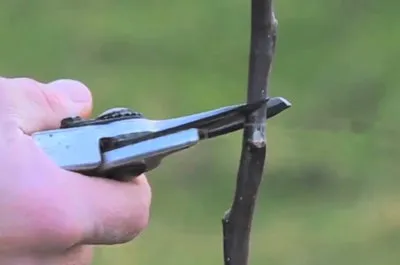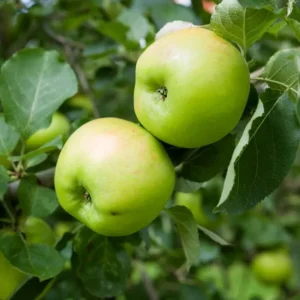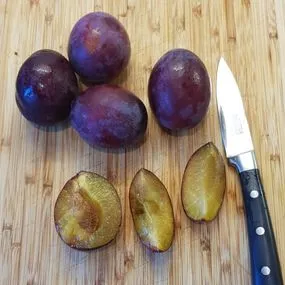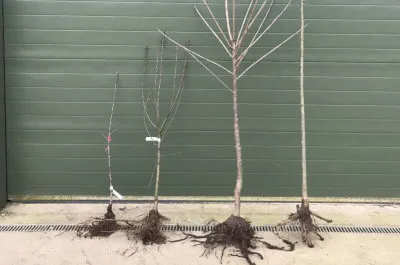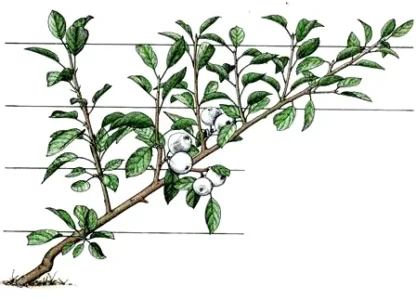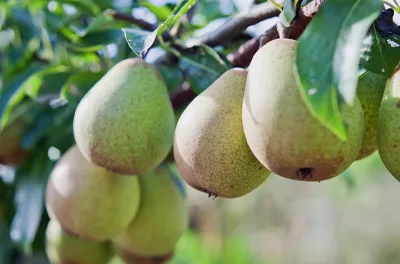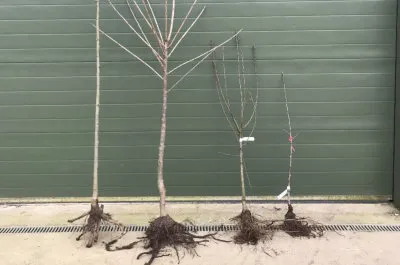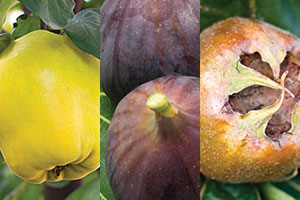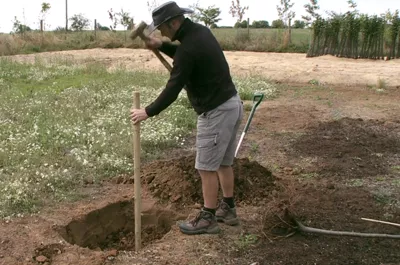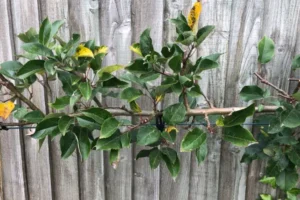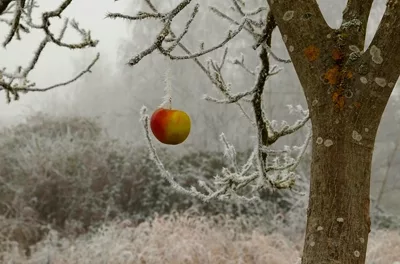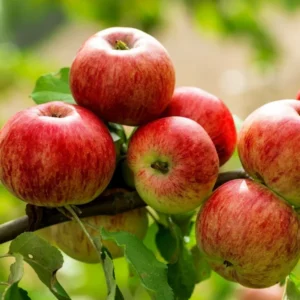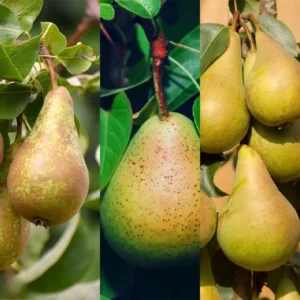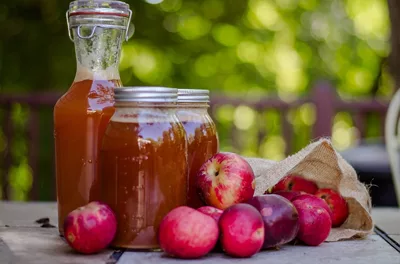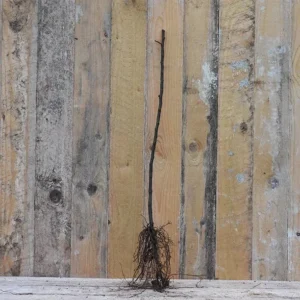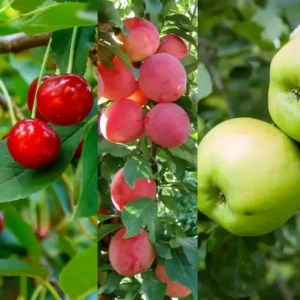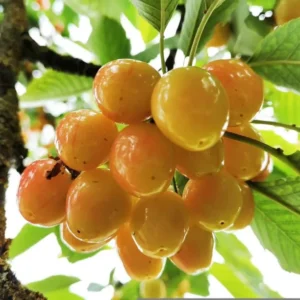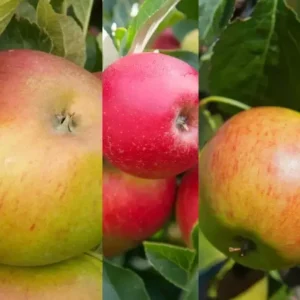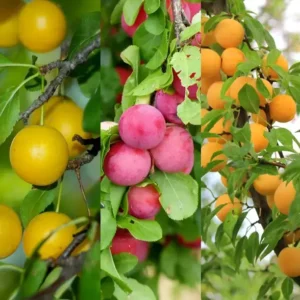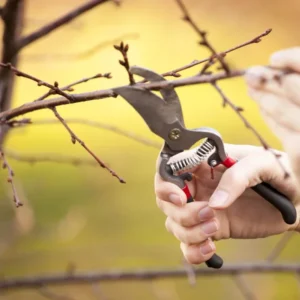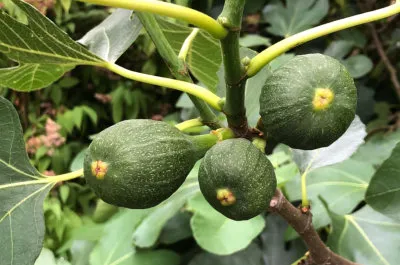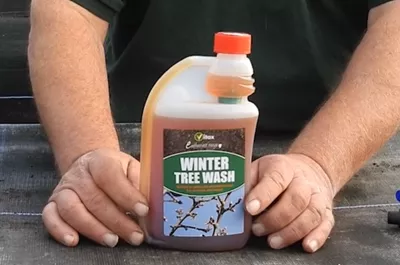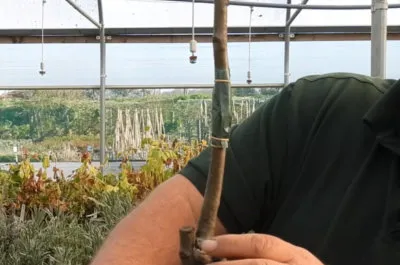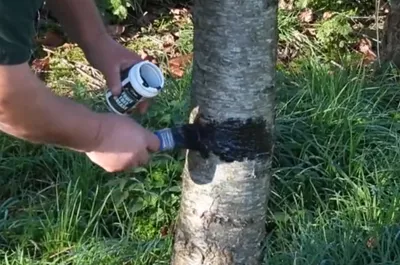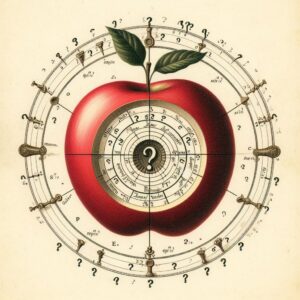Yorkshire Coffee Roasters Support Local Heritage Orchard
Category: Fruit Trees
Why We Don’t Sell Isaac Newton’s Apple Tree
It’s not a very good apple tree. Simple as that. Several years ago, we sold “Isaac Newton’s apple tree”, which is already a part-fib. Flower of Kent is a good example of why many old heritage varieties are no longer grown. They were the best available in their day, but now they are outclassed in… Continue reading Why We Don’t Sell Isaac Newton’s Apple Tree
Backseat Driving: Do I Need To Stake A Tree?
Picking on Huw Richards Inspires Us to Make Better Tree Planting Videos At Ashridge, we feel a bit responsible for how well people plant trees. We are not the the Huw Richards police; we would never pick on him because he is YouTube famous and we want some of that. We totally agree with his… Continue reading Backseat Driving: Do I Need To Stake A Tree?
Partial Self Fertility in Fruit Trees Like Summer Sun
One of our customers, M, got in touch with a fruit tree pollination question, asking about the difference between: M had bought a Summer Sun cherry tree, and noted that the RHS said she’s partially self-fertile, whereas we clearly state that she’s practically kinda almost self-fertile. Other top garden sites like Garden Focused lean toward… Continue reading Partial Self Fertility in Fruit Trees Like Summer Sun
Get As Many Fruit Varieties As Possible From A Small Area
Cordon apples & pears are even better suited to grafting than freestanding trees
Pruning New Fruit Trees
Formative pruning of new, freestanding fruit trees, starts with either unbranched Maidens, or young Bushes or Half Standards with a further year’s branch development. Pruning A Maiden Fruit Tree “Open Centre” These videos apply equally to new fruit trees containing pips like apples and pears, and those containing stones, like plum and cherry, being grown as “ordinary trees”. There are… Continue reading Pruning New Fruit Trees
Pruning Tip Bearing Apple Trees
Most Apples are spur bearing; partial tips are like spurs Most apples and pears are spur bearing: they are pruned “normally”, and are suitable for cordons and espaliers. Partial tip-bearers have spurs too, and are pruned about the same way, a bit less often. Few Apples are true tip bearers Pruning Tip Bearers VS Spur… Continue reading Pruning Tip Bearing Apple Trees
Pruning Plum Trees In The UK
The Best Plum Tree Pruning Videos Plums are vigorous trees and respond well to pruning. If they are not pruned, they quickly get tangled and less productive, often with branches breaking under heavy crops. By watching several big plum growers expertly handle their wood, you can improve your plum wood handling at home. Pruning a… Continue reading Pruning Plum Trees In The UK
What are the Fruit Tree Sizes I Can Order?
Compare Maidens, Bushes & Half-Standard Trees
Growing Cordon Fruit Trees
Cordons are compact wire trained fruit trees, usually apple or pear
How to Choose the Right Pear Trees for Your Garden
Grow Conference, then Comice, then Concorde.
What do Bareroot Trees Look Like?
Bareroot trees look like sticks! Compare standard & sapling sizes
Planting A Small Mixed Orchard
Mixed orchards are the future of home growing
How to Plant A Fruit Tree
Fruit Tree Planting Watch our step-by-step video showing you how to plant bush or half-standard sized fruit tree with a small 120cm tree stake.It applies to any bush or half-standard size fruit tree: apple, pear, cherry, plum, quince, etc. All fruit trees have a graft union where the rootstock is fused to the scion: this union point should be above ground level. VIDEO TRANSCRIPT Hello,… Continue reading How to Plant A Fruit Tree
Building Wire Supports To Grow Fruit On Walls, Fences & Posts
This post concentrates on fruiting plants, but the same principles apply to an ornamental “wall shrub”. How to start training fruit trees on wires These instructions apply to fixing wires to existing fences or walls for training maiden fruit trees into cordon, espalier, fan, and sometimes “step-over” shapes.Some nurseries sell some of those shapes in a starter… Continue reading Building Wire Supports To Grow Fruit On Walls, Fences & Posts
Best Cold Hardy Apple Trees For The North & Scotland
Apple Tree Varieties Suitable for Scotland & the North Apple trees are incredibly hardy, however, their flowers can be damaged in freezing weather, which prevents them from cropping that year. The damage happens when frozen flowers defrost too quickly, so a solution for all but the coldest conditions is to plant your fruit trees against a west facing… Continue reading Best Cold Hardy Apple Trees For The North & Scotland
Best Apple Tree Varieties to Grow in the UK
The British climate makes for ideal apple territory. They like well drained, fertile soil including clay, and with shelter can grow inland at altitudes up to about 900 feet / 275 metres! Apple trees are the largest range of fruit trees we have for sale. Before you buy an apple tree, have a think about which varieties… Continue reading Best Apple Tree Varieties to Grow in the UK
Pear Tree Pollination Groups Chart UK
Choosing Pollination Partners for Pear Trees Use our easy pollination checking tool to quickly find pollination partners for a given pear tree, or browse the table below. To make fruit, most pear trees need to be cross-pollinated with another variety that is in flower at the same time; even self-fertile varieties produce better crops with a partner. Pollination… Continue reading Pear Tree Pollination Groups Chart UK
Making Your Own Cider
Can I make cider from eating and cooking apples? Yes, all apples make cider, but the flavours from cider apples are better: most home cider brews are a mix of several varieties, the more, the merrier. How to Make Cider Here are two excellent videos on making your own cider at home. MIT has a… Continue reading Making Your Own Cider
Types of Fruit Tree Rootstock
To graft your own fruit trees, you can buy Apple, Pear, Cherry, and Plum rootstocks from us. Grafting is the only way to propagate more of a particular fruit tree variety Grafting is satisfying work, it’s a joy to give a new run to a beloved old, possibly dying tree whose name has been lost. A named cultivar (cultivated variety), like a ‘Bramley’… Continue reading Types of Fruit Tree Rootstock
Fruit Tree Pollination Group Charts
Two Ways to Find Pollination Partners Cross Pollination Increases Fruit Crop Size The common fruit trees of Europe, whether with pips like apples or with stones like plums, have flowers with male and female parts. For fruit to form, the female part (pistil) must receive pollen from the male part (stamen). A self fertile fruit tree can use… Continue reading Fruit Tree Pollination Group Charts
Cherry Tree Pollination Groups Chart UK
We grow a good range of self fertile sweet cherry trees that do not need to be pollinated. However, more than half of our range, including all the earliest cropping cherries, will need a pollination partner to bear fruit. Use our pollination tool to quickly find partners for a given tree.See pollination tables for other fruit trees. Pollination Groups:Pollination groups… Continue reading Cherry Tree Pollination Groups Chart UK
Apple Tree Pollination Groups Chart UK
Pollinating your Apple Trees Increases your crop Size Most apple trees need to be pollinated in order to bear fruit, and even self-fertile varieties still benefit. However, apple and crab apple trees are very common all over the UK, even in the city, so there is a high chance that you have a suitable pollination partner in your area already, in which… Continue reading Apple Tree Pollination Groups Chart UK
Plum Tree Pollination Groups Chart UK
Many Plums Are Reliably Self Fertile Most plums are either reliably self fertile or partially self fertile, so pollination is much less of an issue than with most other fruit trees; even “Non-Self Fertile” varieties are more like “Low-Self Fertile”.And there are probably compatible plums already in your neighbourhood. Plum Pollination Use our easy pollination checking tables or pollination… Continue reading Plum Tree Pollination Groups Chart UK
Looking After Fruit Trees
Essential Aftercare & Maintenance for Good Crops Clean Up Leaves & Prunings When the crop is in, and winter is knocking on the door, rake up the fallen leaves and twigs from under your fruit trees. Then burn or bin them: do not compost. More fungal infections overwinter on fallen fruit leaves than anywhere else. When you… Continue reading Looking After Fruit Trees
How To Grow ‘Brown Turkey’ Figs
The most popular fig variety in the UK for getting fruit from is the ‘Brown Turkey’ fig.The instructions for ‘Brown Turkey’ apply to other figs, such as the wild species Ficus carica, but those are more commonly grown as ornamental trees.The dwarf variety, ‘Little Miss Figgy‘, is different: very slow growing and requires little pruning. How… Continue reading How To Grow ‘Brown Turkey’ Figs
Applying Winter Wash Fruit Tree Insecticide
How to Apply Winter Wash to Fruit Trees It’s good to apply winter wash to your fruit and ornamental trees in the winter when there are no leaves on the trees (the spray will scorch leaves, so it is only suitable for winter use). Our winter wash is an organic pesticide that works by attacking the waxy compounds that make up… Continue reading Applying Winter Wash Fruit Tree Insecticide
Apply Fruit Tree Grease Bands to Protect them against Moths
Grease Bands are Convenient on Young Fruit Trees If you apply grease bands to your young fruit trees, it will help prevent winter moths laying their eggs. When these hatch, the caterpillars eat the leaves and fruit. You only use grease bands on younger fruit trees with smooth bark, older trees need to be painted with grease. VIDEO… Continue reading Apply Fruit Tree Grease Bands to Protect them against Moths
Apply Grease to Fruit Trees to Protect them against Moths
Applying fruit tree grease from November onwards is used to trap a wide variety of winter moths before they can lay their eggs and preventing caterpillars eating the leaves and fruit. In the video below, we show you how to apply the grease to protect your fruit trees. You will need an old paint brush to apply the… Continue reading Apply Grease to Fruit Trees to Protect them against Moths
Can I Grow A Fruit Tree From Seed?
Yes, but… Yes, you can grow a fruit tree from a seed or stone obtained from fruit in the supermarket, but you will not get the same variety.You will usually, but not always, get an undesirable mongrel tree with inferior fruit. Whimsically charming but woefully misleading videos like this tell viewers “don’t throw out your apple seeds, grow a… Continue reading Can I Grow A Fruit Tree From Seed?




